Experiences
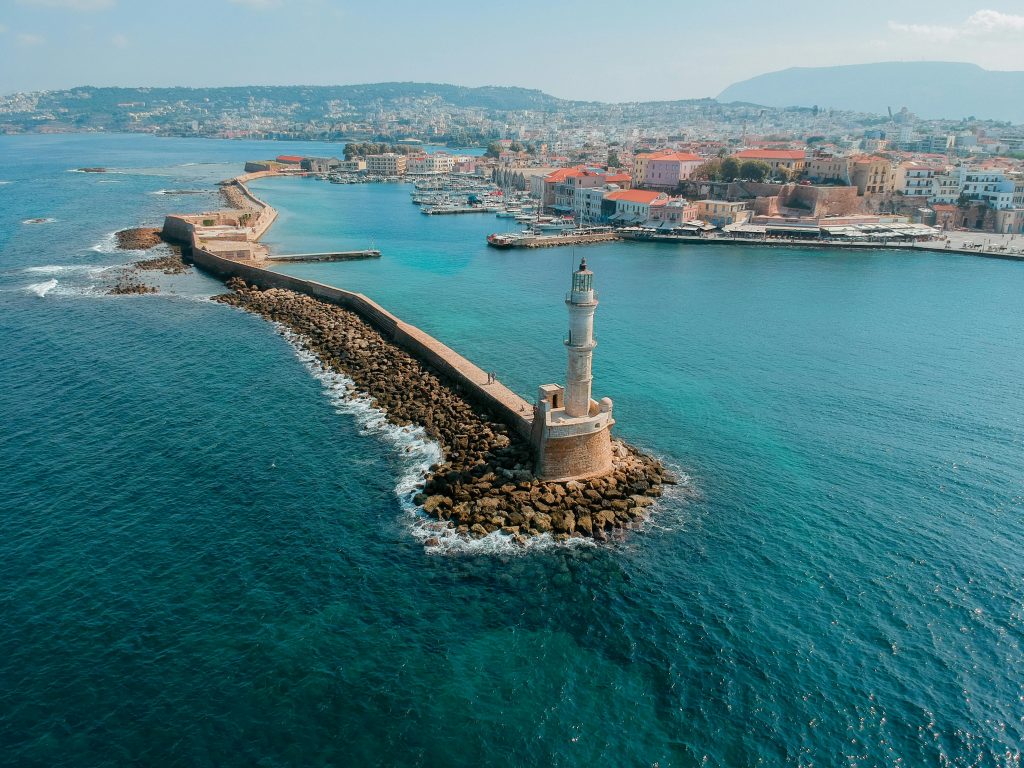
The Venetian Harbour & Egyptian Lighthouse
The stroll around Chania and the Old Town starts from the Venetian Port, with its colorful buildings and the Egyptian lighthouse ahead of you is one of Chania’s defining symbols offering the perfect sunset spot.It’s worth walking around the harbor to the lighthouse, from where you’ll gain another perspective of the old town. The Kucuk Hasan Mosque, just by the port, was built by the Ottomans in the 17th century on top of an ancient Greek temple and offers yet another form of architecture.
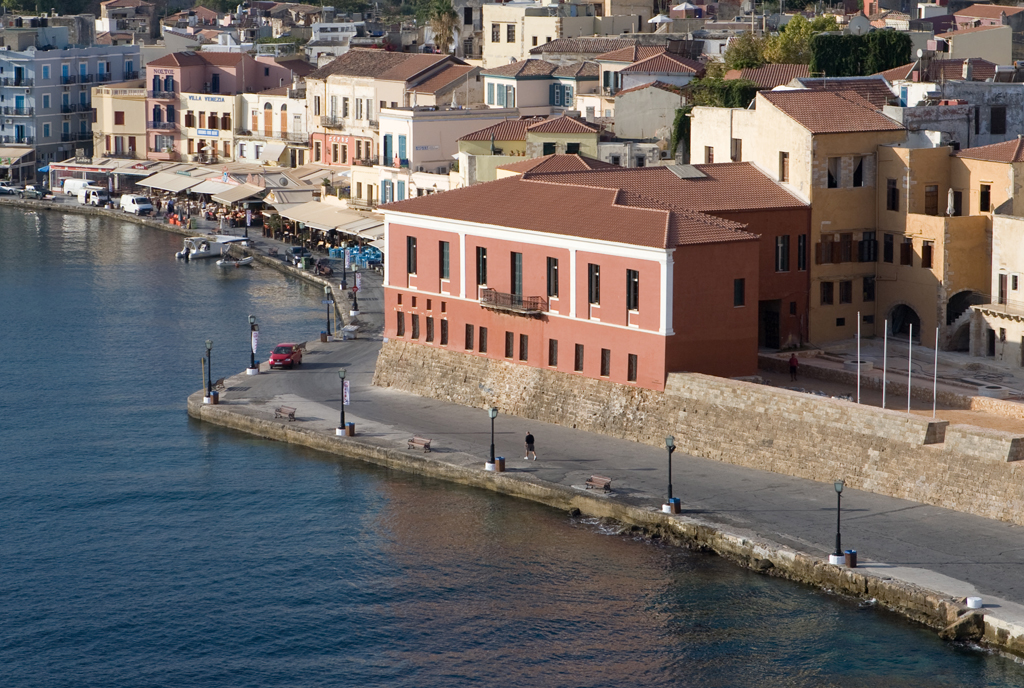
The Firka Fortress & Maritime Museum of Crete
Heading over to the west side of the Old Harbour (directly opposite the lighthouse at the sea entrance to the port), you reach the Firka Fortress. Built by Venetians shortly before the Ottoman occupation in 1645, Firka was used as a barracks and command post and is where the Greek flag was symbolically raised for the first time after Crete’s liberation in 1913. The Maritime Museum of Crete is found at the entrance to the fortress, in which you can learn all about Crete’s seafaring and more. Follow that by exploring the inside of the fortress and admiring the panoramic views of the port.
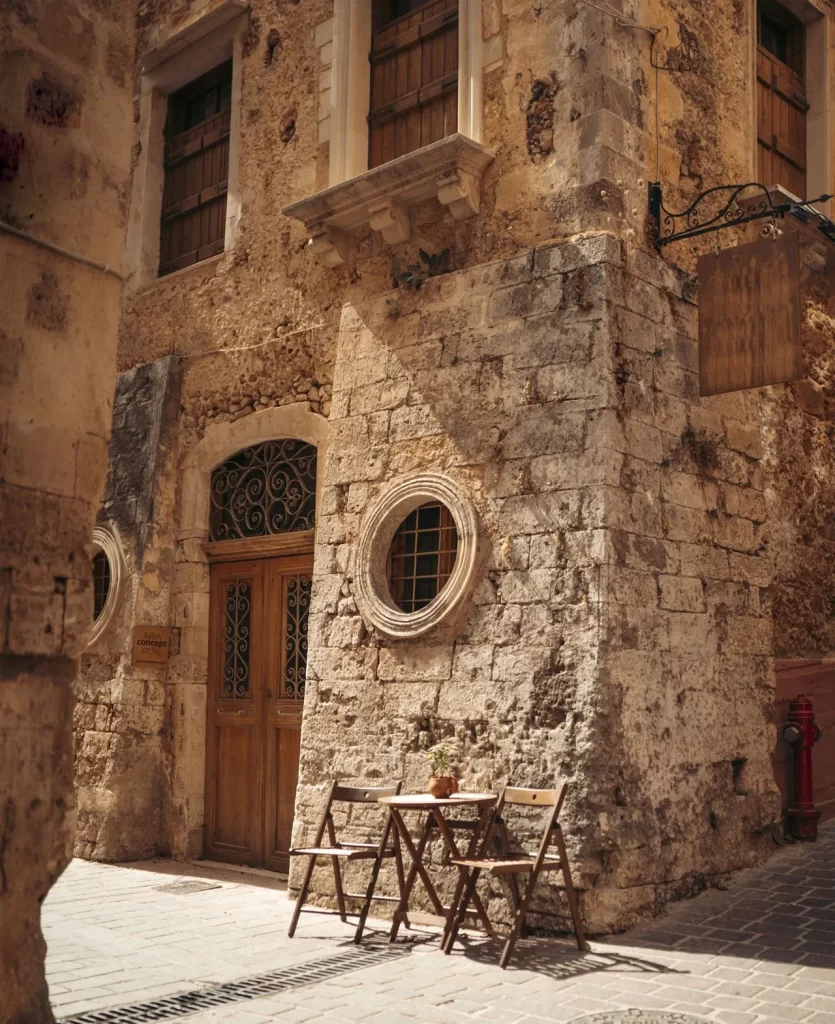
Topana Neighborhood
As you leave the fortress, the surrounding neighbourhood (up to the junction of Zambeliou and Douka streets) is known as Topana. It is famous for its 17th and 18th century Venetian architecture and Turkish bathhouses and was Chania’s Greek quarter during Ottoman times. Take a walk along where you’ll find tasteful souvenir shops and small tavernas. Meanwhile, the Byzantine and Post-Byzantine Collection of Chania is housed in a 15th-century Venetian convent known as San Salvatore before being turned into a mosque and finally repurposed as a museum in 1997.
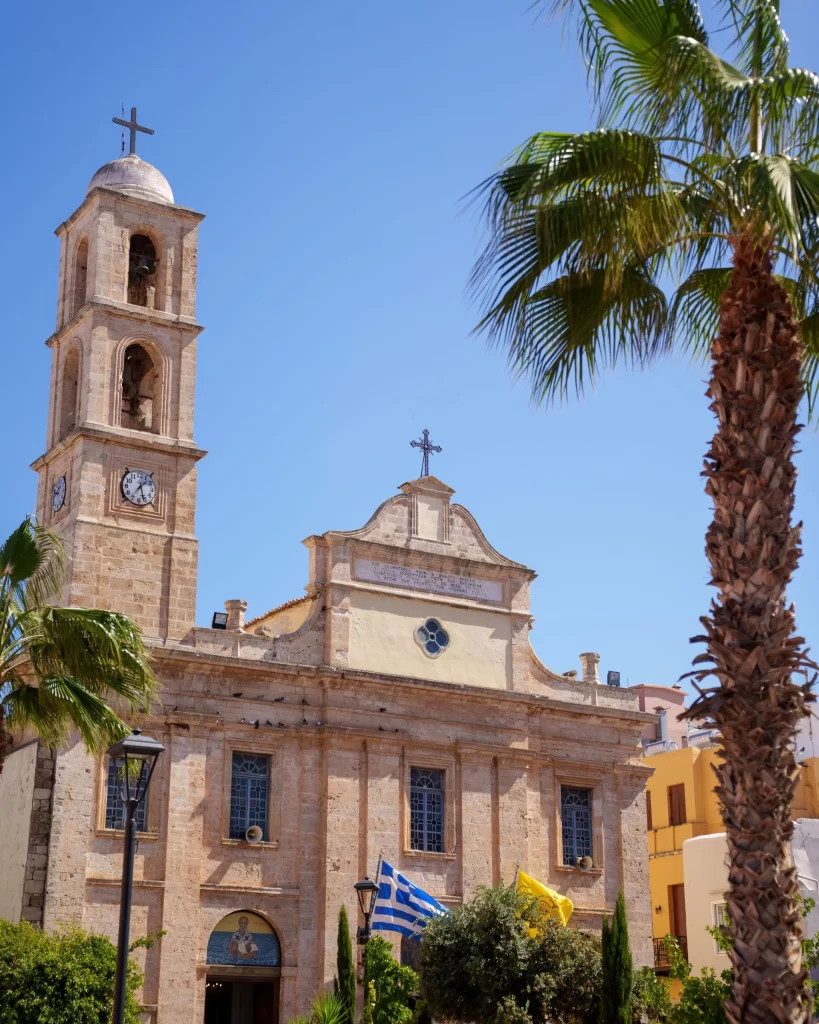
Athinagora Square
Your next stop Athinagora Square and this is your opportunity to admire Chania’s cathedral, dedicated to Panagia Trimartyri (Virgin of the Three Martyrs), the patron saint of Chania. Originally built in the 14th century during Venetian rule. Opposite the square is the Folklore Museum of Chania (also known as the Kritiko Spiti, or Cretan House). Amongst the displays are embroidered textiles from all over Crete.
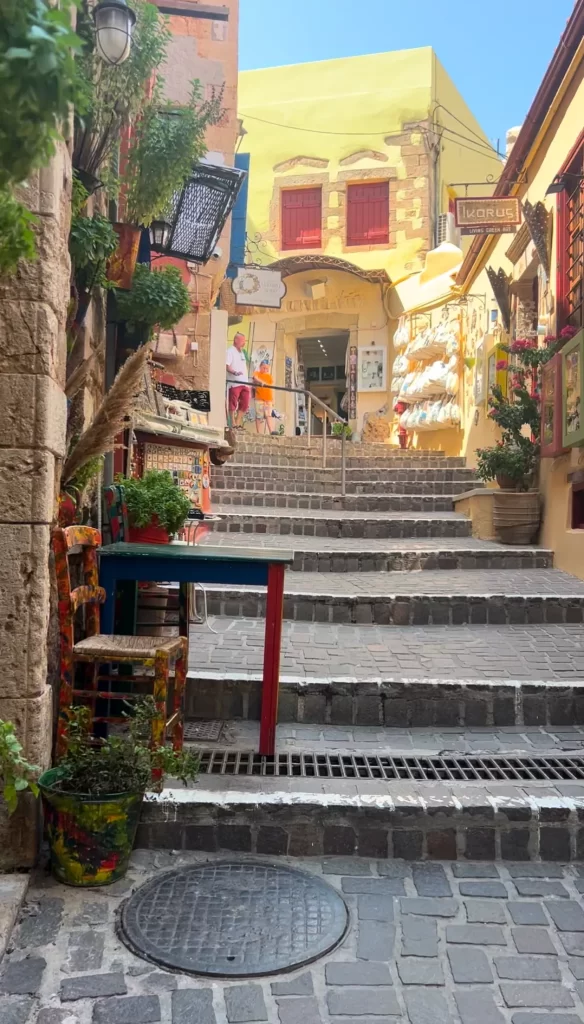
Jewish Quarter
The Jewish quarter of Chania is found behind the harbour and is demarcated by Zampeliou, Portou and Halidon streets. Prominent Jewish families concentrated on Kondilaki Street, which is also the location of the Kehal Hayyim, the sole surviving synagogue on Crete. This neighbourhood is full of shops, tavernas and restaurants.
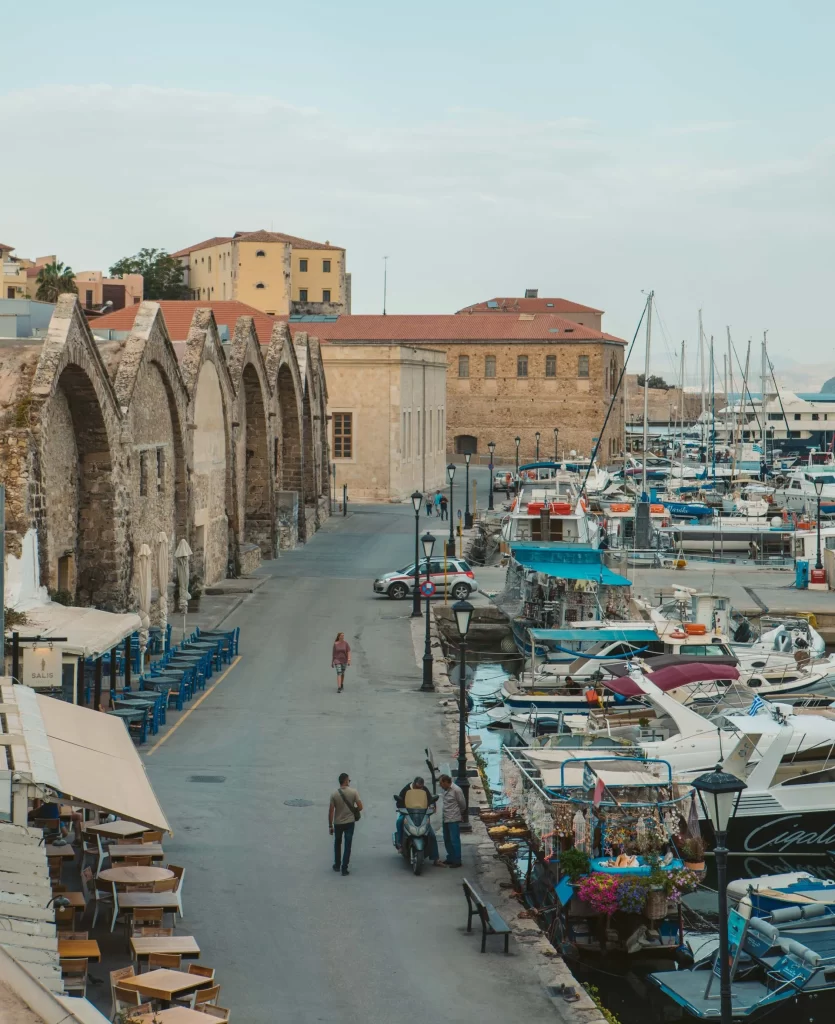
The Venetian shipyards - Neoria
One of the most impressive monuments of the harbour, the Neoria (narrow, stone buildings once serving as ship repair yards) were built in the 16th century when the Venetian fleet dominated the Mediterranean and needed constant maintenance. In total, 23 shipyards existed, of which the Megalo Arsenali in Katechaki Square stands out of its historical significance. At the end of the pier, you’ll find the Museum of Ancient Shipbuilding along with a replica of the Minoas, a Minoan-era ship from the 16th-15th century BC. Built in 2003, it made its maiden voyage to Piraeus carrying the Olympic Flame for the 2004 Athens Olympics.
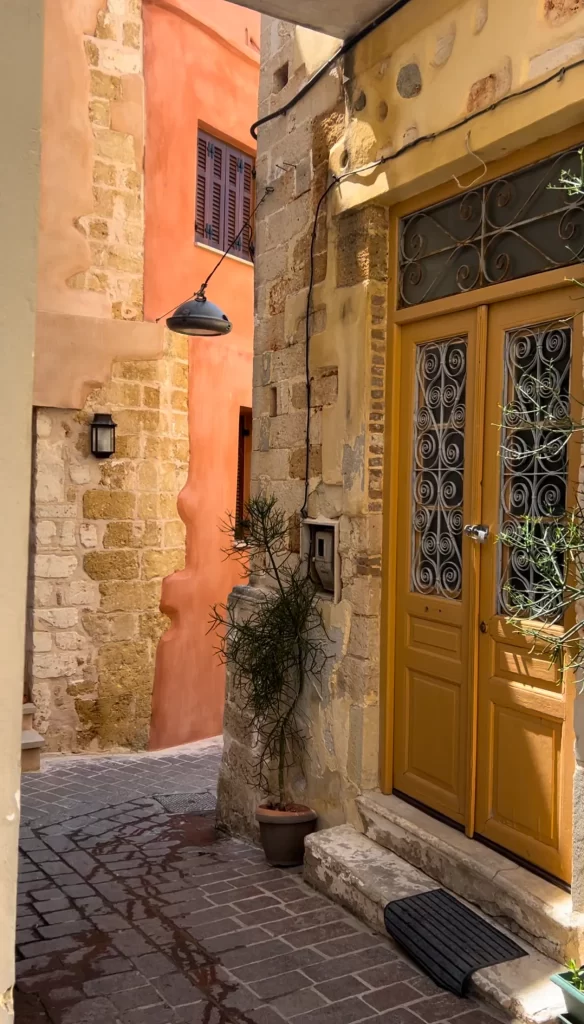
Splatzia Square
Wrapping up your walking tour of Chania Old Town, you reach Splatzia Square, the heart of the Turkish district during the Ottoman occupation. The shade-giving trees, the traditional tavernas contemporary cafes and bars give the square a special atmosphere. You’ll also find the Church of Agios Nikolaos here, whose history dates to an original church built by Dominican-order monks in 1320. It has survived various transformations over the centuries, before settling on its final incarnation in 1918.
